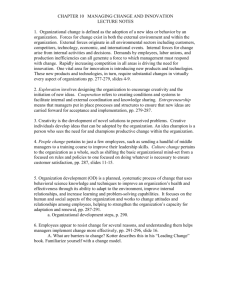St. Luke's R.C. Primary School, Westminster FA
advertisement
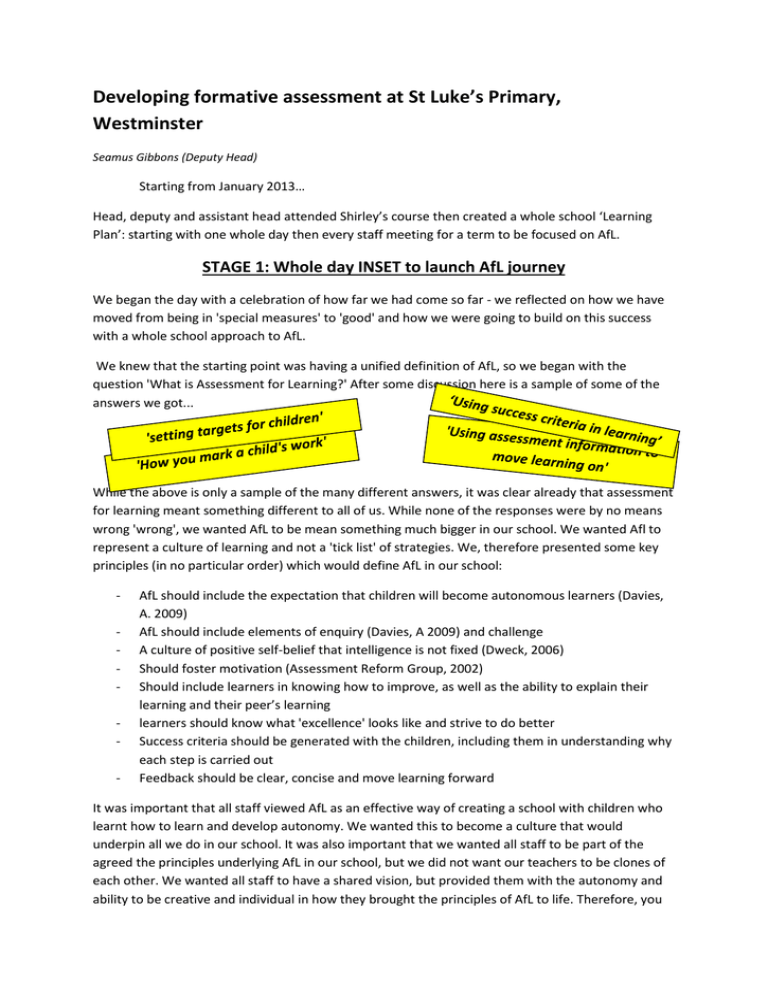
Developing formative assessment at St Luke’s Primary, Westminster Seamus Gibbons (Deputy Head) Starting from January 2013… Head, deputy and assistant head attended Shirley’s course then created a whole school ‘Learning Plan’: starting with one whole day then every staff meeting for a term to be focused on AfL. STAGE 1: Whole day INSET to launch AfL journey We began the day with a celebration of how far we had come so far - we reflected on how we have moved from being in 'special measures' to 'good' and how we were going to build on this success with a whole school approach to AfL. We knew that the starting point was having a unified definition of AfL, so we began with the question 'What is Assessment for Learning?' After some discussion here is a sample of some of the answers we got... While the above is only a sample of the many different answers, it was clear already that assessment for learning meant something different to all of us. While none of the responses were by no means wrong 'wrong', we wanted AfL to be mean something much bigger in our school. We wanted Afl to represent a culture of learning and not a 'tick list' of strategies. We, therefore presented some key principles (in no particular order) which would define AfL in our school: - AfL should include the expectation that children will become autonomous learners (Davies, A. 2009) AfL should include elements of enquiry (Davies, A 2009) and challenge A culture of positive self-belief that intelligence is not fixed (Dweck, 2006) Should foster motivation (Assessment Reform Group, 2002) Should include learners in knowing how to improve, as well as the ability to explain their learning and their peer’s learning learners should know what 'excellence' looks like and strive to do better Success criteria should be generated with the children, including them in understanding why each step is carried out Feedback should be clear, concise and move learning forward It was important that all staff viewed AfL as an effective way of creating a school with children who learnt how to learn and develop autonomy. We wanted this to become a culture that would underpin all we do in our school. It was also important that we wanted all staff to be part of the agreed the principles underlying AfL in our school, but we did not want our teachers to be clones of each other. We wanted all staff to have a shared vision, but provided them with the autonomy and ability to be creative and individual in how they brought the principles of AfL to life. Therefore, you will notice that lots of the training is exposure, discussion and reflection about AfL and none of it dictates how a teacher should teach. Once this was shared and agreed, we began by discussing how we can create the right learning culture in our school. THE RIGHT LEARNING CULTURE: We began by asking the staff: This proved to be not only a fun starting point, but also very useful as it really meant all members of staff had to focus on what the classroom looked like. It was interesting to look at things like table layout, whether the children were collaborating, where was the teacher etc. Another interesting thing was to compare the teaching assistant working in that classroom with the teacher’s picture of that class, where had they placed themselves and the teacher? Staff shared their pictures and made annotations and once this was done, we put the pictures to the side and told staff they would have time to re-visit their picture at the end of the session. Growth Mind-Set Vs Fixed Mind-Set We know that in order for AfL to work, the classroom culture needs to be right as this underpins all the principles of AfL. This is why we began with exploring growth and fixed mind-set. All that we needed to know about fixed and growth mind-set could be found in Shirley’s book ‘Active Learning Through Formative Assessment’ and this was further developed on when we attended Shirley’s conference. We also found useful information on Carol Dweck’s brainology website. One of the real benefits of launching this training in January, was that the teachers now knew their classes and as we discussed the different mind-sets, teachers could match the traits associated with them with children in their class. We shared the fixed and growth mindsets with the staff and took time to reflect as a school on the following question. ‘What are some of the things we may do as teachers which might encourage a fixed mindset?’ This opened a big discussion. Teachers worked together, scribing on big sheets of sugar paper. We discussed many things, from on a larger scale issues such as how in the UK our school data is compared nationally and league tables are often a factor in judging the quality of schools sharing levels, to everyday issues such as sharing levels, grouping by ability, when we get lesson feedback do we focus on the grade or feedback for improvement etc. These conversations were important to have as it allowed people to reflect on some of the bigger issues which could encourage a fixed mind-set. We had a big dialogue about the use of the word ‘work’ in our school and whether this word encourages a growth or fixed mind-set. Some of what our team said: When you think of the word ‘work’ you think of When you think of the word ‘learning’ you think of ‘Something for someone else’ ‘Something personal and meaningful’ ‘Laborious’ ‘Room for improvement’ ’not personal’ ’OK to make mistakes’ Some changes we discussed Team work or Team learning? Let me see your work or Let me see your learning? Have you finished your work or Have you finished your learning? Homework or Home learning? Growth Mind-Set - GROWTH MIND-SET Embrace challenges Resilient in the face of difficulty Effort is the path to mastery Learn from critical feedback See other learners as aids to their own learning Find lessons and inspiration in the success of others IMPACT ON LEARNING PLAYED A 90 SECOND VIDEO OF CAROL DWECK DISCUSSING THE BENEFITS OF A GROWTH MIND-SET FOUND AT: http://www.mindsetworks.com/webnav/vi deogallery.aspx After sharing the research about Growth Mind-set learners, we moved on to thinking about how we support the learners in our school in developing a Growth Mind-set. We looked at Shirley Clarke’s DVD and watched the section about creating the right learning culture. After each DVD we allowed discussion time and shared all the good practice we had seen. We suggested the following steps would be a good starting point for creating the right learning culture: STEP 1: FIND OUT WHAT MIND-SETS ALREADY EXIST IN YOUR CLASSROOM STEP 2: Show some inspirational success stories HOW YOU COULD DO THIS: Ask the children when they feel clever, does it reflect a growth or fixed mind-set? Provide the learners with 3 challenges all of which vary in difficulty, such as 3 different mazes and 3 different jigsaws. Which one do they choose? Chris Watkins has a useful learning questionnaire and the brainology website has one also. If you put ‘famous failures’ into a search on ‘YouTube’ you can get some fantastic inspirational reflecting a Growth Mind-set and allow pupils time to reflect on this. Open up discussions on intelligence and Growth mind-set (lots of good examples on Shirley’s DVD) Ensure we praise ‘effort’ STEP 3: Have a whole school vision on what a ‘good’ learner is. STEP 4: Refer to ‘Growth’ mind-set and our school learning muscles across the curriculum videos about famous people which reflect a Growth mind-set. Circle time discussions – Are you born intelligent? What does intelligence mean? Show a selection of famous people and ask children to order from most to least intelligent (this idea is on the DVD) Guided reading activities based around brain research in child friendly language *This is discussed in more detail below - How are our learning muscles being referred to in subjects such as PE and Art? How does the learning environment encourage a growth mind-set…what do learners see when they look around? FINALLY: The above are only suggested steps and there are many more ways a growth mind-set can be developed, so any other ideas you have feel free to use in your class and bring to share with the rest of the team at our staff meeting. You know your children best. Developing the best possible learning culture is something which is continuously developing and becoming embedded and will not happen overnight. Watch out for those learners who may switch mind-sets in different lessons! What makes a good learner? We felt as a school that it was important that we had a unified vision of what makes a good learner/successful learning. So we began the session by asking teachers to trace around their hand and in 60 seconds write in the 5 fingers, 5 things which made a good learner. Once time was up, they were asked to find someone in the room they had yet to partner with and shake their hand/high five and then both sit beside each other and share what they felt made a good learner. After attending Shirley’s conference we found the table she provide us with on Successful Learning had covered everything mentioned and we wanted to know make this personal to our school. Inspired by this, we created our own to make it more personal to our school. It reflected the same message as the above table, but being a Church of England school we wanted the learning muscles to incorporate some Christian ethos. Following this INSET day, we asked our local vicar to help us link the learning muscles with Bible stories. We also felt that if the learning muscles felt more unique to our school it would make it more meaningful. With this in mind we made the table below. St. Luke’s Learning Muscles Stay Resilient Story of the Persistent widow – Luke 18:1-8 Think hard Joseph suggests a plan for the famine in Egypt –Genesis 41:33-40 Learn hard Practise lots Keep going in the face of difficulty Try new strategies Ask for help Start again Take a brain break Manage distractions Get lost in the task Break things down Plan and think it through Learn from our mistakes Story of the prodigal son – Luke15:11-24 Unite Nehemiah gets everyone together to rebuild the walls of Jerusalem. Nehemiah 4:6-23 Keep Improving Jethro Moses Father in Law who makes some suggestions about how to govern people, which Moses puts into practice – Exodus 18:13-27 Enjoy learning Jesus teaches about the excitement and possibility of faith – Luke 17:5-6 Show curiosity Samaritan woman asking questions of Jesus in John 4:7-26 Draw diagrams, jot down thoughts or things which help you think Respond to all feedback Reflect on your learning Don’t worry if things go wrong Have a growth mind-set Make every piece of learning better than the last Learn as a team Co-operate with other learners Listen to others Say when you don’t understand Be kind when you disagree Explain things to help others Remember that everybody has something to contribute Be tolerant Keep reviewing your learning Identify your best bits Improve one thing first Try to be better than the last time Listen to feedback Don’t compare yourself to others, only yourself Take small steps Feel proud of your achievements Feel you neurons connecting Imagine your intelligence growing by the minute! Be creative Let you imagination go Use what you have learnt in real life Know that you can do it, if you practise Ask questions Notice things Look for patterns and connections Problem solve Think of possible reasons Research Ask ‘What if…?’ Once we had established these, we wanted posters professionally made and framed in classrooms and around the school so our learning message was consistent to all learners in the building. We made contact with a design company and got the posters below designed: N.B: The children love the posters and understand that the posters represent learning muscles and what makes a good learner. We spoke as a staff, that we would not name or personify the characters in the posters. They were simply visual representations of the learning muscles and we were never learning to ‘please’ the character. We wanted children to be learning for themselves and not for something else. Reflection Journals We finished our morning session off by introducing learning journals. We felt that it was extremely important that every learner in the school had time for reflection on their learning and by every learner this included all members of staff also. We provided all staff with reflection journal and explained that this reflection journal needed to come to every staff meeting as it would become an important part of their professional development. We finished the morning session with the following reflection thoughts: We give people the choice to share their reflections, but don’t ask them to do this. The decision is theirs. REVISIT REFLECTIONS FROM LAST MEETING – HOW DO YOUR REFLECTIONS AND YOUR CURRENT SITUATION MATCH? WHAT HAS WORKED WELL IN YOUR CLASS AND WHAT GOOD PRACTICE CAN YOU SHARE? WHAT ISSUES HAVE AROSE AND WHAT SUPPORT MIGHT YOU NEED? SHARE POSSIBLE SOLUTIONS OR REVISIT NEXT WEEK IF NEEDED. NEW ASPECT OF AFL INTRODUCED/REVISTED AND DEVELOPED REFLECTION TIME ON THE LEARNING DURING THE SESSION. A tick-list of the key elements of our whole day INSET which may help you plan your own: Do all members of the Senior Leadership Team have the same vision? Is there a clear definition of what AfL means? Extra tips Practice what you preach - conduct training in the AfL style that you want to see in the classroom Take an AfL approach to monitoring e.g. peer assessment (including teaching assistants) of books/planning and learning/ displays UPDATE May 2013: Specific meetings have been carried out on success criteria, paired talk, classroom culture, questioning, learning muscles, reflection, feedback. Our staff meetings are every other week and the focus is now revisiting and developing (e.g. creating talk partner success criteria and how the pairs communicate and cooperatively improve learning) All staff completed an anonymous online questionnaire (Survey monkey website) which meant they were brutally honest. As a result we are revisiting their reflection journals and looking at excellent examples. Next steps: bringing parents on board. Each of the 7 learning muscles is in a bag and each teacher will choose one and host a specific activity in their class which reflects that muscle clearly and we are going to do a whole school carousel so every teacher teaches every child on a set ‘Learning Day’. This will be filmed and put on our website. Parents will be encouraged to visit… including teaching assistants.
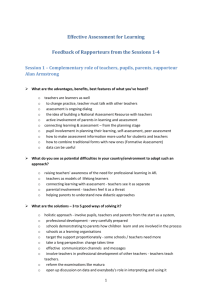

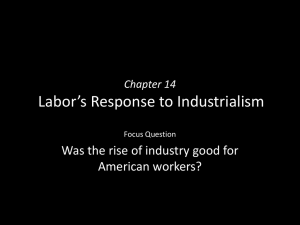
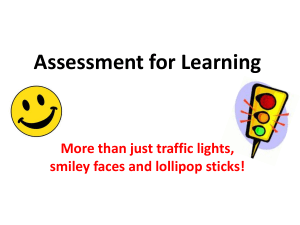
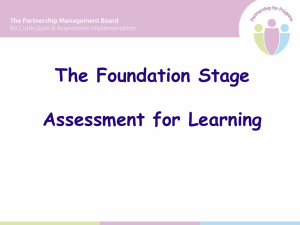
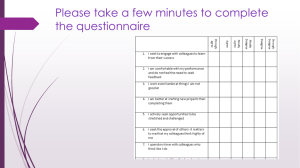
![afl_mat[1]](http://s2.studylib.net/store/data/005387843_1-8371eaaba182de7da429cb4369cd28fc-300x300.png)
